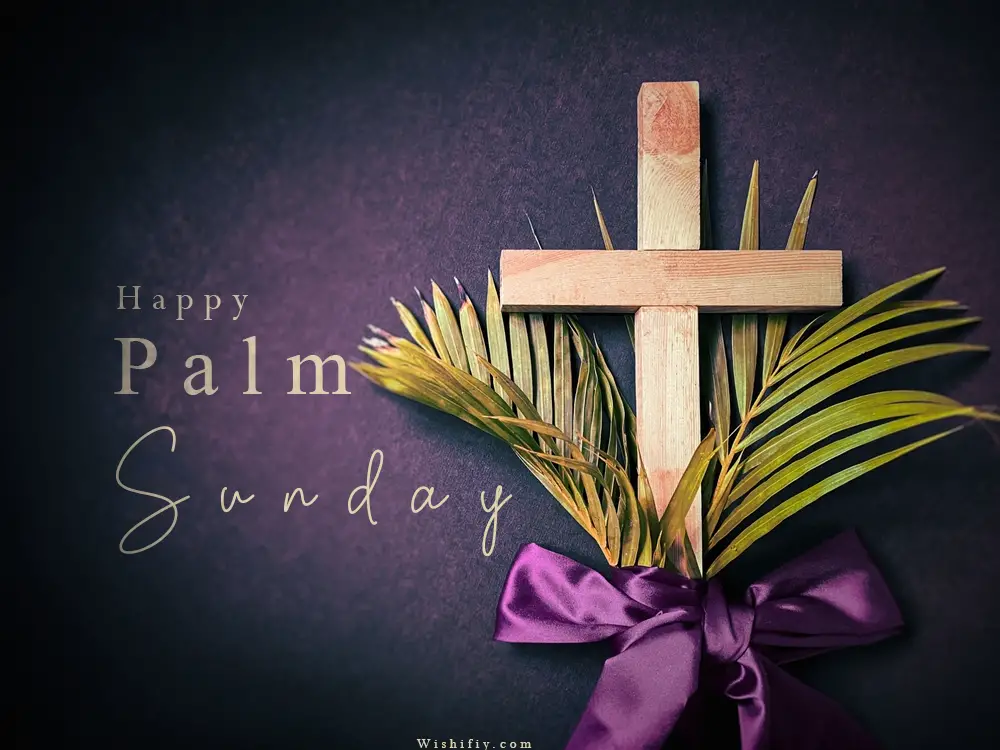Physical Address
304 North Cardinal St.
Dorchester Center, MA 02124
Physical Address
304 North Cardinal St.
Dorchester Center, MA 02124

We All Adore A Happy Wishes

We All Adore A Happy Wishes



Palm Sunday, also known as Passion Sunday, is a Christian holiday that falls on the Sunday before Easter. It marks the beginning of Holy Week, which commemorates the final days of Jesus Christ’s life before his crucifixion and resurrection. Palm Sunday is celebrated in various ways around the world, with unique customs and traditions that reflect the cultural and historical context of different regions. In this article, we will explore how Palm Sunday was celebrated in the year 1500, during the late Middle Ages, and what it meant for people at that time.
To understand the significance of Palm Sunday in 1500, we need to look at the broader religious and social context of the late Middle Ages. This was a time of great religious fervor and devotion, with the Catholic Church playing a central role in people’s lives. Christianity was not just a personal belief, but a communal practice that shaped every aspect of society, from politics and economics to art and literature. The Church was the main institution that provided guidance, comfort, and salvation to the faithful, and its authority was undisputed.
Palm Sunday is rooted in the Gospel accounts of Jesus Christ’s entry into Jerusalem. According to the Bible, Jesus arrived in the city riding on a donkey, while crowds of people greeted him by waving palm branches and shouting “Hosanna” (meaning “save us” in Hebrew). This was seen as a prophetic fulfillment of the Old Testament prophecy in Zechariah 9:9, which stated that the Messiah would enter Jerusalem riding on a donkey.
The symbolism of the palm branches is also significant. In ancient times, palm branches were used to signify victory and triumph. The people of Jerusalem welcomed Jesus as a triumphant king, hoping that he would deliver them from Roman rule and restore the kingdom of Israel. However, Jesus’ mission was not to establish a physical kingdom but to establish God’s spiritual kingdom.
In the early church, Palm Sunday was celebrated as a major feast day. It was called “Dominica in Palmis” or “Palm Sunday of the Lord’s Passion.” The palm branches were blessed and distributed among the people, who would carry them in a procession to the church, singing hymns and psalms. This practice has been carried on through the centuries and is still observed in many churches around the world today.
In the year 1500, Palm Sunday was celebrated in much the same way as it is today, with some variations in different parts of the world. Let’s take a closer look at how Palm Sunday was observed in 1500.
In Europe, Palm Sunday was a significant event in the Christian calendar, and people prepared for it with great enthusiasm. Churches were decorated with palms, and the priests wore red vestments to symbolize the blood of Christ. In some regions, especially in Italy and Spain, the people would create elaborate processions, with the participants dressed in colorful costumes.
In Italy, for example, the streets of Rome were filled with people waving palm branches and singing hymns. The pope would lead a procession from the Vatican to the Church of Santa Maria in Trastevere, where a mass was held. The pope would bless the palms, and the cardinals.Palm Sunday is a significant event in the Christian calendar that occurs on the Sunday before Easter. It marks the beginning of Holy Week, which is a period of intense reflection and spiritual preparation leading up to Easter Sunday. Palm Sunday commemorates Jesus’ triumphant entry into Jerusalem, as described in the Gospels, where he was welcomed by crowds of people who laid palm branches at his feet. In this article, we will explore the history, significance, and traditions associated with Palm Sunday in 1500.
The year 1500 was a time of great religious and political upheaval in Europe. The Renaissance was in full swing, and the Catholic Church was facing growing criticism and dissent from within. The Protestant Reformation was still a few decades away, but the seeds of dissent were already being sown. In this context, Palm Sunday took on particular significance as a symbol of the power of the Church and the faith of the people.
Palm Sunday has its roots in the Jewish festival of Sukkot, which commemorates the Israelites’ journey through the desert after leaving Egypt. During Sukkot, the Jews would wave palm branches as a symbol of their faith and hope for the future. When Jesus entered Jerusalem, the crowds welcomed him with the same gesture, laying down their cloaks and palm branches before him as a sign of their allegiance.
The significance of this gesture was not lost on Jesus’ followers. They saw it as a sign that Jesus was the long-awaited Messiah who would restore Israel to its former glory. They were convinced that Jesus would overthrow the Roman occupiers and establish a new kingdom in Jerusalem.
Unfortunately, their hopes were dashed when Jesus was arrested, tried, and executed a few days later.Palm Sunday marks the beginning of Holy Week, the most important week in the Christian calendar. It is a day of great significance, as it commemorates Jesus Christ’s triumphant entry into Jerusalem, just a few days before his crucifixion. The name “Palm Sunday” comes from the palm branches that were waved by the crowds who greeted Jesus as he rode into the city on a donkey.
The history of Palm Sunday dates back to around 30 AD when Jesus entered Jerusalem to celebrate the Jewish festival of Passover. As he rode into the city, the crowds who had heard about his miracles and teachings began to lay their cloaks and palm branches on the ground in front of him, shouting “Hosanna!” The people of Jerusalem believed that Jesus was the long-awaited Messiah who would free them from the oppression of the Roman Empire.
Powered BY Wishifiy.com